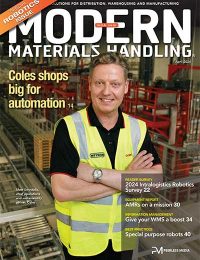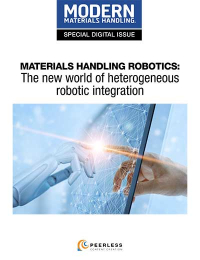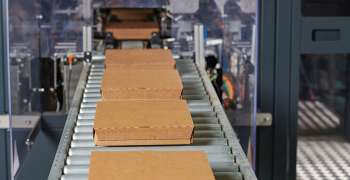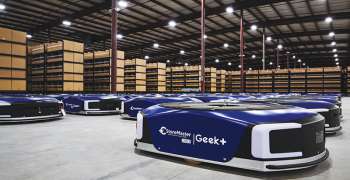Made in the USA: It’s not necessarily an all-or-nothing proposition
One positive outcome from the current COVID-19 pandemic is the increased willingness of government entities to support business activities that help sustain private sector supply chain efforts. It’s time for supply chain managers to step up and leverage these opportunities.

This is the third of five articles that breaks down the key issues that all supply chain managers should focus on as they emerge from COVID-19 and carve a path forward for their organizations. You can read Part 1 here and Part 2 here.
It didn’t take long for the global pandemic to become a lightning rod for bringing manufacturing activities back to the U.S. Already facing scrutiny on the political and taxation fronts, two in three (69%) of domestic manufacturers are now considering bringing production to North America (compared to 54% in February).
A highly-charged political conversation in the U.S. and in most developed nations, reshoring production operations to domestic firms however doesn’t have to be an all-or-nothing proposition. Consider, for example, how much of the reshoring conversation happening right now is due to the potential vulnerability that pandemic-related shortages exposed our supply chains to.
Companies that relied heavily on Wuhan-based manufacturers were caught off guard when COVID-19 hit in early-2020. Then, a similar situation emerged when the pandemic impacted the U.S., where essentials like toilet paper and disinfectant wipes became scarce commodities. In both cases, the company that relied solely on an offshoring strategy was likely labeled the “bad guy”—basically, the poster child for what can and will go wrong when you move production overseas.
A vast political divide, the reshoring conversation overlooks one crucial fact: consumers are only willing and able to pay so much money for products, even when their heart wants to support a “Made in America” initiative. If an iPhone cost $500 to manufacture in the U.S. (versus $220 when made overseas) —and if that translated to a $2,000 sticker price—would we have as many consumers using them? Probably not.
This is just one example of the economic value of offshoring at least some production to other areas of the world. Historical considerations of “total cost of ownership” (TCO) calculations already support this idea. What we need now is renewed recognition of the critical relationship between supply chain resiliency and offshoring, and an extension of the reshoring conversation to consider total costs that include a “cost of disruption” when making decisions on the location of supply sources.
What is multi-shoring?
The U.S. can continue to run a viable, outsourced manufacturing sector, while keeping an eye on the items that don’t have to be 100% beholden to full outsourced risk. Viewing the issue through this lens of disruption, supply chains can embrace a multi-shoring approach towards offshoring, nearshoring, and reshoring decisions.
Multi-shoring isn’t a simple rehash of the old SKU rationalization idea (i.e., knowing that different SKUs come from different countries); it’s knowing that we need to think beyond TCO and approach offshoring from a multiplicity of perspectives. Companies must identify which items will be “critical” during certain periods, and then organize their supply chains to ensure continuity of supply of those items during those critical periods.
Armed with these insights, supply chain managers can determine which operations should be reshored, versus which can remain offshored or nearshored, and all while focusing on maintaining resiliency through diversification. Nearshoring presents real opportunity for supply chain managers when the economic equation prevents a complete reshoring approach. There are, after all, other countries that would enjoy the benefits of U.S. foreign direct investment. This presents ample opportunity for domestic companies looking to expand their “shoring” strategies.
Made in America attractions
Over the last couple of decades, the U.S. government has mobilized significant resources and developed campaigns to encourage new business development and onshore production. The same governing body responded by implementing the Paycheck Protection Program (PPP), in an effort to help the country’s smaller enterprises from going out of business due to the pandemic.
As consumers became more aware of the role of government in the private sector, something interesting happened: an increased mindfulness of the value derived from proactive business to government (B2G) interactions. Where in the past this intersection may have been difficult to pinpoint or define, we see recent examples like Kodak’s headline-making shift into drug production, which was aided by a $765 million Defense Production Act loan (“the first of its kind,” according to WSJ). The initiative–supposedly to be run out of Kodak’s pharmaceutical subsidiary —was meant to “help expedite the domestic production of drugs that can treat a variety of medical conditions and loosen the U.S. reliance on foreign sources,” according to the report.
Reflecting on how a “pandemic is a horrible thing to waste,” this move on the U.S. government’s part to provide increasing private sector incentives could be a segue into even more public-private partnerships in the future. This bodes well for supply chain managers, who can now pay increased attention to specific government entities, and ask: “Okay, so what’s available for me?” Maybe it’s a restoration loan, a traditional loan, or even a unique partnership recognizing the value or critical role that certain organizations or sectors play in the economy. This may sound good in theory, but the reality is that many organizations aren’t sufficiently aware of these opportunities to effectively leverage them.
Uncle Sam wants to help
Regardless of your political beliefs or preferences, it’s clear that the current administration has invested in restoring and saving specific business sectors. It immediately rolled out the PPP to help small businesses in early-2020, and has since also supported numerous healthcare, transportation, and tech-based entities as they fight their way through the pandemic.
The question is, can you effectively tap into these opportunities while ending the constant “all or nothing” conversation as it relates to offshoring? Kodak’s application of existing infrastructure to a new business opportunity represents a pivotal revival point for a firm that filed for bankruptcy in 2012. And while the move on the government’s part has since come under scrutiny, it does reveal clear potential in working with Uncle Sam to revive business while offering a win-win for both business and private sector entities. It is up to supply chain managers to always do their homework before entering into such agreements.
The U.S. manufacturing sector is at a point where we have to stop assuming that domestic viability is impossible in certain industries, and instead realize that this is actually both possible and plausible. Putting an end to the false choice narrative between offshoring or not, we can combine the best of all of these worlds to create a viable, multi-shoring strategy that keeps supply chains flowing and organizations profitable—all without placing much of the financial burden on consumers. Yes, even if this requires a little help from Uncle Sam every once in a while.
It’s time for supply chain managers to step up to the plate. While the overall impact of COVID-19 is difficult to quantify at this point, we can bring about positive change where opportunities abound. Track down your local government council, economic development agency, or other group and educate them on the key pain points, opportunities, and gaps that need to be filled within your supply chain or sector. Thanks to COVID-19, we now have a government that’s more appreciative of supply chain management, and is ready, willing, and able to help; let’s take advantage of this opportunity and tell them just how to do it.
About the author: Yemisi Bolumole, Ph.D., CLTD-F is associate professor of supply chain management at the Eli Broad College of Business, Michigan State University. Her areas of research emphasis include the policy and public sector implications for supply chain managers. A regular speaker at sundry professional events, Bolumole currently serves as Chair of ASCM/APICS’ CLTD certification exam committee. She can be reached at [email protected].

Article Topics
Blogs News & Resources
60 Seconds with Bob Trebilcock, outgoing executive editor, Modern Materials Handling Learn from lift truck service history Two voices of reason on pallet materials The reBound Podcast: How Pitney-Bowes is innovating with autonomous vehicles. Packaging Corner: Be open to change 60 Seconds with Robert Martichenko of American Logistics Aid Network The reBound Podcast: Looking for talent in all the right places: How Essendant is revolutionizing recruitment More BlogsLatest in Materials Handling
Registration open for Pack Expo International 2024 Walmart chooses Swisslog AS/RS and software for third milk processing facility NetLogistik partners with Vuzix subsidiary Moviynt to offer mobility solutions for warehouses Materials Handling Robotics: The new world of heterogeneous robotic integration BSLBATT is looking for new distributors and resellers worldwide Lucas Watson appointed CSO for Körber’s Parcel Logistics business in North America Hyster recognizes Dealers of Distinction for 2023 More Materials HandlingSubscribe to Materials Handling Magazine

Find out what the world's most innovative companies are doing to improve productivity in their plants and distribution centers.
Start your FREE subscription today.
April 2024 Modern Materials Handling

Latest Resources










